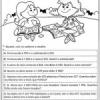
O nitrogen cycle it is a biogeochemical process, it can also be called the nitrogen cycle, it is an important instrument in the composition of living beings, this composition occurs with the transformations of gaseous nitrogen. Check out how this entire process is done
Within the scope of the nitrogen cycle, it is first necessary to understand that it is part of the largest reserve of the planet Earth's atmosphere, that is, nitrogen is not weak at all, it guarantees the gas for living beings and the physical environment. Nitrogen enables a cycle that can have its process started in the first stage, releasing it to the halfway through and start this whole process over again, all this action is divided into 3 segments that we will see in followed.
See too: Plankton
The nitrogen cycle is present in 80% of our atmosphere, that is, 80% of what we breathe is nitrogen gas, but differently from our other friend oxygen, he needs to go through several steps to transport his gas to living beings, we can't incorporate alone this nitrogen directly into our body, for this to happen it takes 3 steps, they are: fixation, nitrification, Denitrification.
Fixation: Fixation takes atmospheric nitrogen and transforms it into ammonia, this process is done by 2 groups of bacteria, the first bacteria uses the nitrogen for your metabolism releasing ammonia, causing plants to absorb nitrogen through the nodules that are formed by them, they usually stay in the roots of leguminous plants (beans, peas, soybeans) For a better understanding, each point shows how the process is done:
Nitrification: Ammonia is transformed into nitrate, the transformation from nitrite to nitrate occurs, nitrite is toxic, a bad substance for plant absorption, another genus of bacteria, called nitrobacter, will take this nitrite and transform it into nitrate, being a good substance for plants, the main source of absorption, that is, this phase is basically the transformation of ammonia into nitrates.
denitrification: The nitrate in this process is returned to the nitrogen that returns to the atmosphere repeating the entire cycle, that is, nitrogen is incorporated by living beings, because of the fact the bacteria do the entire fixation process, others the Nitrification process, the plants absorb this nitrate, the herbivores eat the plants, reaching the nitrogen. When a plant dies the decomposers decompose, return the nitrogen to the soil, that is, the environment in the form of ammonia, so the cycle starts in the middle, half, causing the ammonia to pass again through this cycle.
To better understand this process
All this happens so that the nitrogen comes back in a “clean” way to circulate freely between living beings and physical environments, that is, it is extremely important for the survival of living beings.
Here is a representative image of the entire process:

Other articles:
Subscribe to our email list and receive interesting information and updates in your email inbox
Thanks for signing up.


